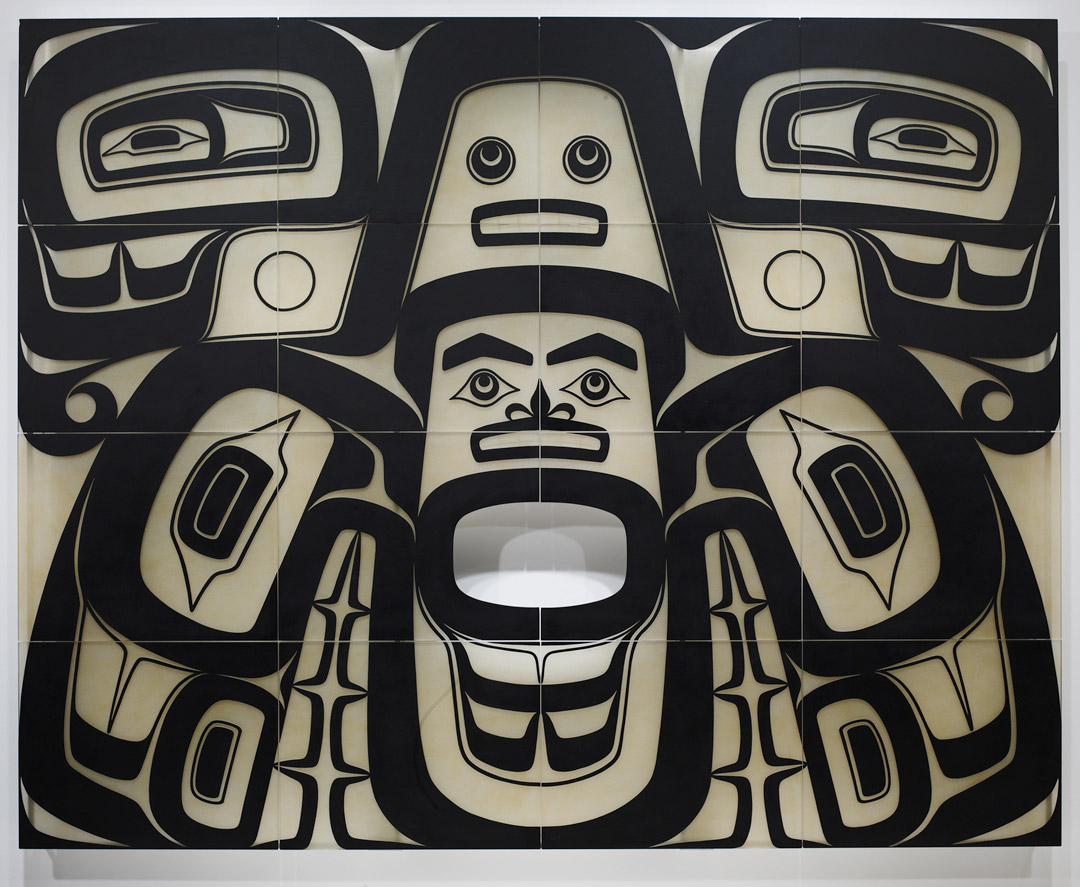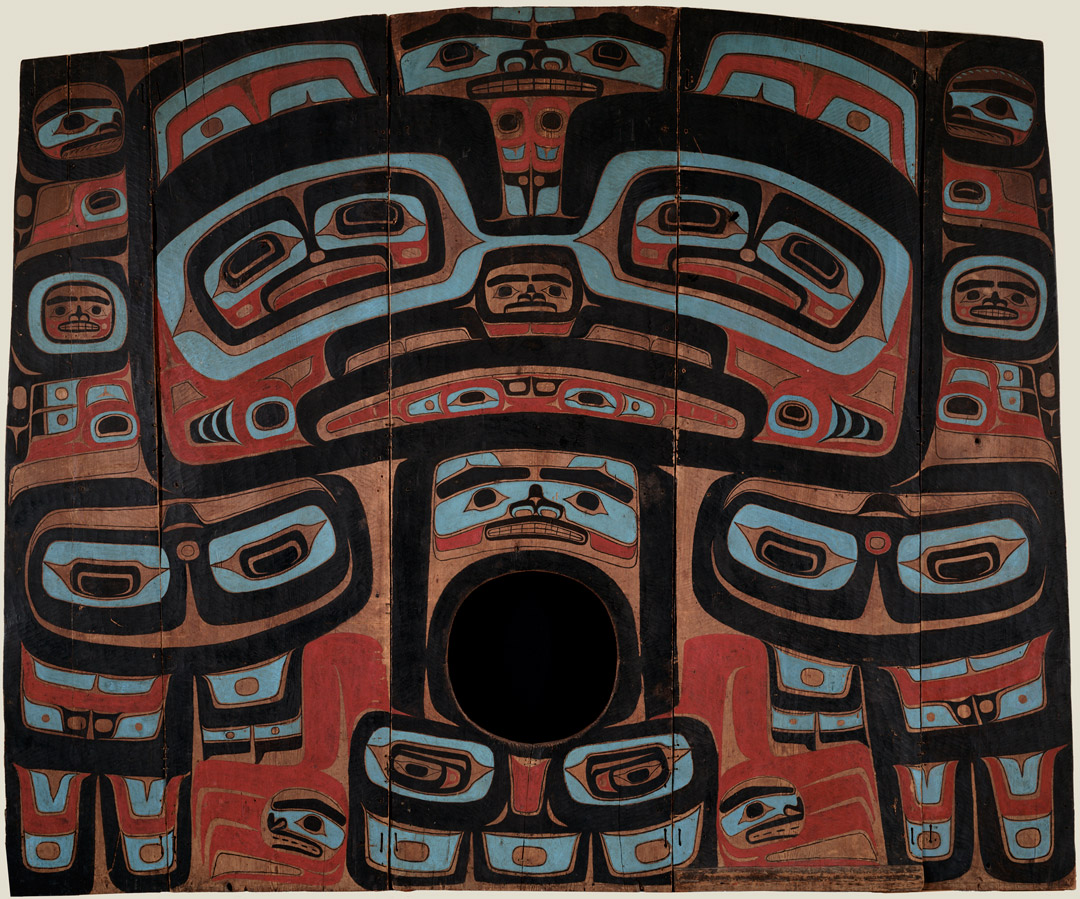Object of the Week: Keet Shagoon (Killer Whale)

Family, thresholds, and the mutually beneficial relationship between collecting and creating tell the story of Preston Singletary’s carved glass screen Keet Shagoon (Killer Whale).
Singletary was raised here in Seattle. His parents were artistic; his father painted and wrote poetry, and his mother wove textiles and crocheted. Their engagement with the arts encouraged Singletary to pursue art-making. As a young artist he studied with friend and mentor Dante Marioni at the renowned Pilchuck Glass School, where he would work with mentors Benjamin Moore and Lino Tagliapietra, among others. He joined and contributed to a studio glass movement driven by a close cohort of Pilchuck artists. He was also, intrinsically, part of a second family of artists, who were Native artists. On this side, Singletary lists Joe David, Robert Davidson, and Dempsey Bob as important influences. By the example and encouragement of Singletary’s Native peers, including Marvin Oliver, he was led to explore his ancestral history through his artistic practice, and he began incorporating Northwest Coast Native design into his work in 1987. In several ways SAM’s 2003 Keet Shagoon represents the culmination of that trajectory in Singletary’s career. It is a contemporary re-imagining of an interior house screen, one of the most important items of clan property, which served to display the clan’s heritage through images representing its ancestors and benefactors. The killer whale is Singletary’s family crest symbol.
Interior house screens held an important ceremonial role in Native life. In the cedar plank house, they separated the chief’s quarters from the rest of the living area and provided a portal through which he could make a dramatic entrance. The work’s form represents a threshold, and Singletary has also remarked on how the medium of glass can be “a threshold to the future for the cultural growth of Native people.” There’s more. In 2003, SAM exhibited 13 of Singletary’s works in the Native American Galleries in an exhibition called Preston Singletary: Threshold. In his artist statement Singletary explained the importance of the term for him, as he came to see himself standing at the nexus of ancient Northwest Coast Native traditions, his own world, and the future. Native art, with its roots in the physical world of cedar and pigment, and its spiritual significance, seemed to him a link between the earth and the cosmos. Finally, SAM’s purchase of Keet Shagoon memorialized another poignant moment of transition: the passing from life to death.

Yéil X’eenh (Raven Screen), ca. 1810, attributed to Kadyisdu.axch’.
John H. Hauberg (1916-2002) was a successful businessman in forest resource management and lumber, a Native arts enthusiast, and an astute collector who worked directly with Native owners, dealers, and auctioneers to form an exceptional private collection. Hauberg’s generous gifts to SAM over the years 1983–1991 built the foundation of the museum’s notable Native American art collection. Acquiring Keet Shagoon in honor of Hauberg, a year after his passing, was a fitting choice. The Pilchuck Glass School, at which artist Preston Singletary had learned his craft, had been funded by Hauberg and his first wife, Anne Gould Hauberg in 1971; and SAM’s famous Raven Screen, which had directly inspired Singletary to produce Keet Shagoon before his 2003 show at SAM, had been donated by Hauberg in 1979. SAM wouldn’t have Keet Shagoon—and we all wouldn’t be able to enjoy it—without both of their contributions.
—Jeffrey Carlson, SAM Collections Coordinator